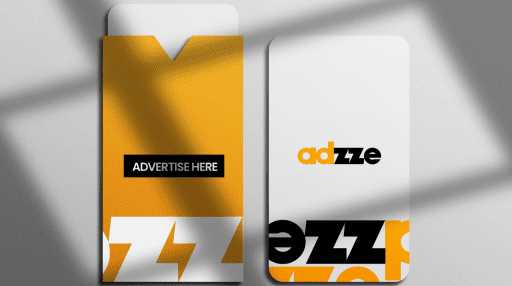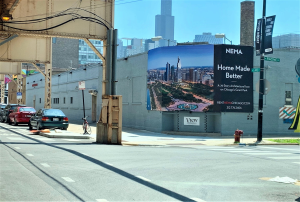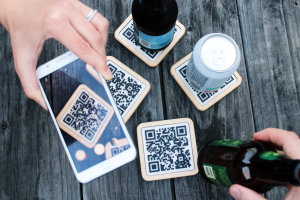Why Hotel Key Card Ads Deserve More Attention
In the crowded world of advertising, standing out isn’t just about flashy visuals—it’s about strategy rooted in psychology. Hotel key card ads offer a unique, high-touch marketing medium often underestimated in traditional media planning. But what if we told you that each time a hotel guest unlocks their door, your brand could be imprinting itself deeper into their memory?
This blog dives into the neuromarketing behind hotel key card ads, exploring how frequent, tactile interaction leads to increased memory retention and brand recall. For marketers seeking measurable engagement, hotel key card ads may be one of the most underutilized tools in your arsenal.
Hotel Key Card Ads: More Than Just Branding
Hotel key card ads are physical advertisements printed on the cards guests use to access their hotel rooms. These cards are handled multiple times a day, ensuring repeated brand exposure in a distraction-free environment. But their effectiveness isn’t just in exposure—it’s in how our brains process repetition, touch, and relevance.
Why Neuromarketing Matters
Neuromarketing blends neuroscience and marketing to understand how consumers respond to branding at a subconscious level. When applied to hotel key card ads, neuromarketing helps us understand why this format works exceptionally well:
Repetition strengthens neural pathways linked to memory.
Tactile interaction activates sensory processing, making experiences more memorable.
Emotional context (like a vacation or business trip) enhances brand imprinting.
The Science: How Memory Retention Works in Hotel Key Card Ads
Repetition and the Spacing Effect
In cognitive psychology, the spacing effect shows that people remember information better when it’s presented repeatedly over spaced intervals. Hotel key card ads naturally utilize this effect because guests often use their cards 6–10 times per day.
Imagine a guest staying for 3 nights—that’s 20+ brand interactions without any digital fatigue or banner blindness. That’s powerful.
Tactile Engagement Boosts Retention
Touch plays a critical role in memory. According to a study published in the Journal of Consumer Psychology, items that people physically interact with are more likely to be remembered.
Hotel key card ads tap directly into this by being one of the only advertising mediums that require physical handling multiple times a day.
Contextual Relevance Matters
Memory works better when new information is tied to a meaningful context. Hotel stays are typically tied to vacations, business deals, weddings, or conferences—moments people remember.
A hotel key card ad associated with a good experience, like a local restaurant or spa, naturally becomes more positively encoded in memory.
Designing Hotel Key Card Ads for Maximum Impact
To make the most of neuromarketing strategies, designing hotel key card ads requires intention:
Keep the Message Simple
The human brain processes visuals faster than text. Use strong imagery and a short, compelling headline. Don’t overcrowd the card.
Use Color Psychology
Colors evoke emotional responses. Blue can build trust (great for financial services), red can create urgency (perfect for limited-time offers), and green evokes health and relaxation (ideal for wellness brands).
Incorporate QR Codes
QR codes make the bridge between offline engagement and digital conversion easy. Track interaction by leading guests to exclusive discounts, app downloads, or video content.
Make It Useful
Add real value—map of the hotel area, emergency info, or a promo for a nearby service. The more helpful the card, the more it’s used—and remembered.
Targeting and Audience Segmentation in Hotel Key Card Ad Campaigns
Hotel key card ads aren’t just about impressions—they’re about precision. Brands can choose placements by:
Geolocation: Target by city, neighborhood, or even zip code.
Demographics: Luxury hotel guests vs. budget motel guests.
Purpose of Travel: Business travelers, tourists, families.
This flexibility allows brands to craft tailored messages. For example, a luxury car brand might advertise in 4-star hotels near corporate centers, while a local pizza shop could target a chain hotel near a university.
Case Study: Hotel Key Card Ad Success in the Hospitality Industry
A luxury spa chain launched a hotel key card ad campaign across premium hotels in Miami. The cards offered a 20% discount and featured a QR code for booking.
Results:
41% scan rate of QR codes.
22% of scanned users booked a service.
Campaign ROI: 5x initial investment.
The neuromarketing strategy here worked: contextual relevance, repetition, and emotional resonance (vacation, relaxation) amplified the brand’s success.
Hotel Key Card Ads vs. Traditional Media
Advertising Format | Frequency of Exposure | Cost | Personalization | Measurability |
Hotel Key Card Ads | High | Low | High | High |
TV/Radio Ads | Medium | High | Low | Medium |
Billboards | Low | High | Low | Low |
Online Display Ads | Medium | Medium | Medium | High |
Hotel key card ads outperform traditional ads in recall, cost-effectiveness, and engagement—especially for local and mid-funnel marketing strategies.
Final Thoughts: Why Neuromarketing Makes Hotel Key Card Ads a Smart Bet
In a world of shrinking attention spans and rising ad fatigue, hotel key card ads offer a powerful blend of frequency, relevance, and physical interaction. Neuromarketing explains why they work so well: they tap into how we naturally retain information—through touch, repetition, and emotion.
For brands looking to drive conversions and enhance memory recall, it’s time to take a fresh look at this proven yet underutilized channel.
Key Takeaways
✅ Hotel key card ads deliver repeated, tactile brand exposure.
✅ Neuromarketing principles like the spacing effect and touch enhance recall.
✅ Contextual placement and emotional association boost engagement.
✅ Measurable ROI through QR codes and targeted distribution makes campaigns trackable.
✅ Perfect for local, regional, and niche campaigns looking for high impact at low cost.






